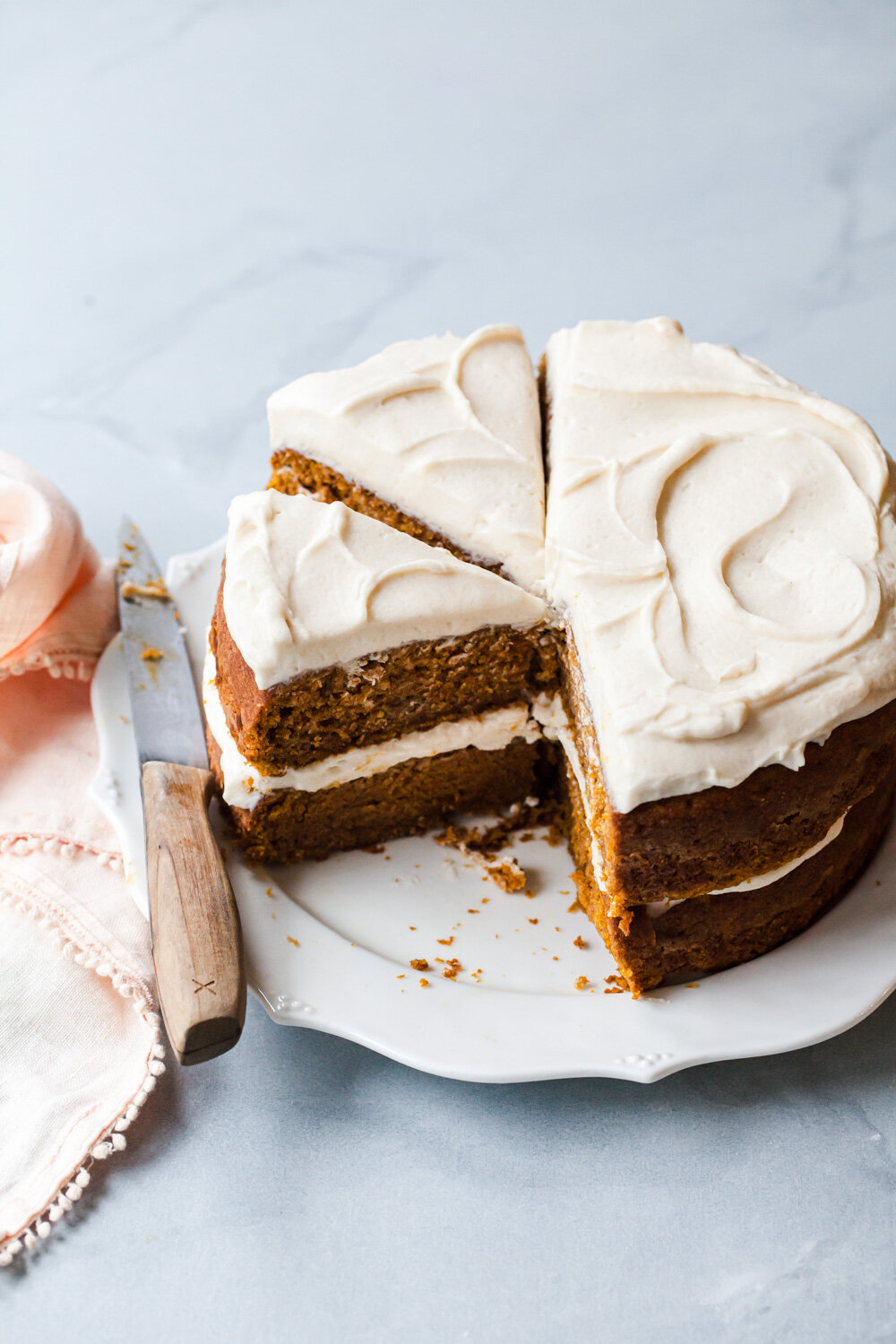Last updated on October 16th, 2022 at 02:49 am
It’s true that baking is more scientific than cooking, but it doesn’t have to be intimidating. There are both hard and some soft rules to live by in the baker’s kitchen that take some of the guess-work and worry away. Experience will teach you which is which, where you can experiment, and what to do when things go south. But if you want to become a better cake baker today, (and who doesn’t?), then follow these Top 10 Cake Baking Tips for your next bake. There are our non-negotiables that are guaranteed to improve the taste and texture of your cakes.
Cake Baking Tips
-
Use Room Temperature Ingredients - To ensure a more homogenous batter (and one that keep you from over-mixing), start with room temperature ingredients. This includes softened butter, eggs, and milk. To quickly bring eggs to room temperature, place them (in their shells) in a bowl of tepid water before gathering your remaining ingredients. Take the chill off of milk or other liquids by microwaving them on the ‘Defrost’ setting for 15 to 30 seconds. Butter must be softened when the Creaming Method is required. Time is best here, but a quick zap in the microwave works in a pinch (but don’t melt it!).
-
Cream the Butter and Sugar - When called for in a recipe, don’t skimp on the creaming process. This should take 2 to 5 minutes in order to properly cream and lighten your butter and sugar. With the creaming method, sugar crystals literally cut into the butter to create little air pockets that help leaven cakes and make them light and fluffy. As the mixer beats, air is being forced down into the mixture. Fluffy cakes start with fluffy butter/sugar!
Note that the butter must be soft for this process to work! Too cold, and the butter will just clunk around the mixer. Too soft, and it will not aerate properly. Softened butter should be able to hold a thumb print without feeling greasy.
-
Measure Flour Correctly - Using weight measurements, especially for things like flour, is the most accurate way to measure. Too much flour may result in dense, dry cake layers. If you are baking up dry cakes, then consider weighing your flour. Alternatively, use the spoon and sweep method (be sure to fluff up and aerate your flour first!) where you lightly spoon fluffed flour into your measuring cup (instead of dipping the cup into the flour container) then levelling it off with a knife. Dipping the cup into the flour container will likely compact the flour. Just think, if a recipe calls for 3 cups of flour and you’ve overpacked each cup, that could result in like an extra ¾ cup of flour in your recipe!
-
Use the Correct Type of Flour - Different types of flour have different percentages of protein. Choose the correct type of flour(s) listed in the recipe to make sure the cake has the right structure and crumb. Cake layers baking up too tough? Substitute a portion of the all-purpose flour with cake flour! Can’t find what you need? Make your own cake flour!
-
Don’t Over-mix - Tough or dense cakes may be the result of the batter (especially after the addition of flour/gluten) being overmixed. To prevent overmixing, start with room temperature ingredients (see above). Alternating the flour and milk mixture helps the batter absorb the dry and liquid ingredients better. Mix cake batter no more than 30-seconds on medium speed after the last streaks of flour are incorporated. To be safe, finish batters by folding with a large rubber spatula.
-
Don’t Skimp on Real Vanilla - For the best flavor, use the best ingredients available to you. When baking butter or yellow cake, splurge on real vanilla. Flavors can’t hide behind strong ingredients like chocolate or banana in these recipes, so make sure the star of the show really shines! If you can’t use vanilla bean seeds or paste, pure vanilla extract will suffice.
-
Baking Soda and Baking Powder are NOT interchangeable - So don’t treat them as equals. Both are chemical leavening agents, but baking soda needs something acidic to react with. Use baking soda in recipes with buttermilk, lemon juice, natural cocoa powder, or when called for directly in a recipe.
-
Select Your Baking Pans with Care - For even baking, choose a cake pan made from aluminum (preferable anodized like Fat Daddio’s cake pans). Dark, non-stick pans may cause over-browning. For layer cakes, make sure the pans have straight sides (preferably at least 2-inches tall).
-
Check for Done-ness Beyond the Clock - Not all ovens are alike, so it is important to know what to look for when the cake is done baking beyond time. A baked vanilla cake will have some browning on top (thanks to The Maillard Reaction) and will spring back to the touch. A toothpick inserted in the center of a baked cake should come out clean or with a few moist crumbs. If there is significant pulling around the edges of the cake pan, the cake is overbaked.
-
Calibrate Your Oven (or use an internal oven thermometer) - Since not all ovens are created equal (see above), it’s helpful to know what temperature your oven actually bakes at and not just what you set it at. An inexpensive grocery story oven thermometer is super helpful in knowing if your oven bakes too hot or too cold. Adjust the temperature accordingly. Make sure the oven has properly preheated before baking.
Other Helpful Baking Tips and Cake Tricks:
Tessa’s Signature Watercolor Cake
How to make Swiss Meringue Buttercream
Do you have any Cake Baking Tips to share? Leave a comment!





Leave a Reply